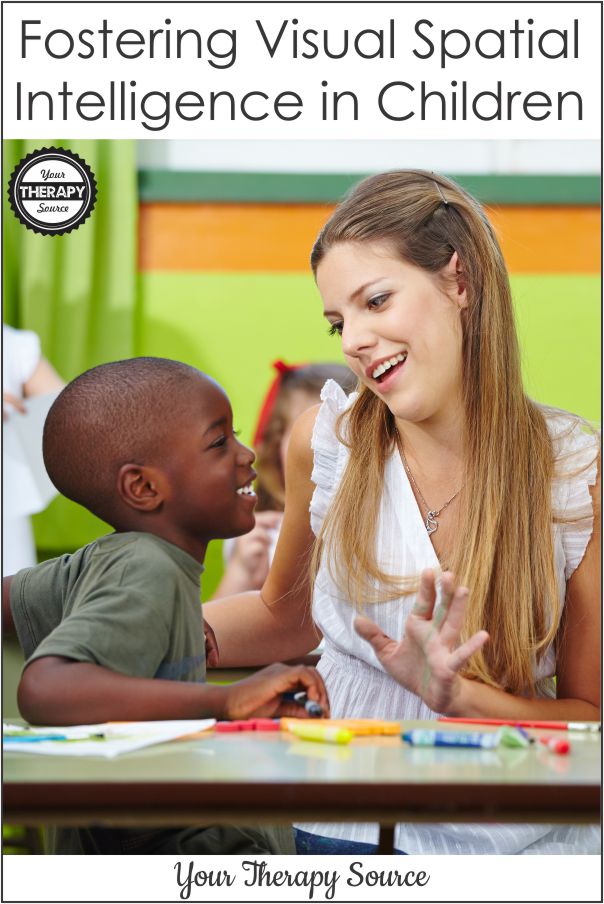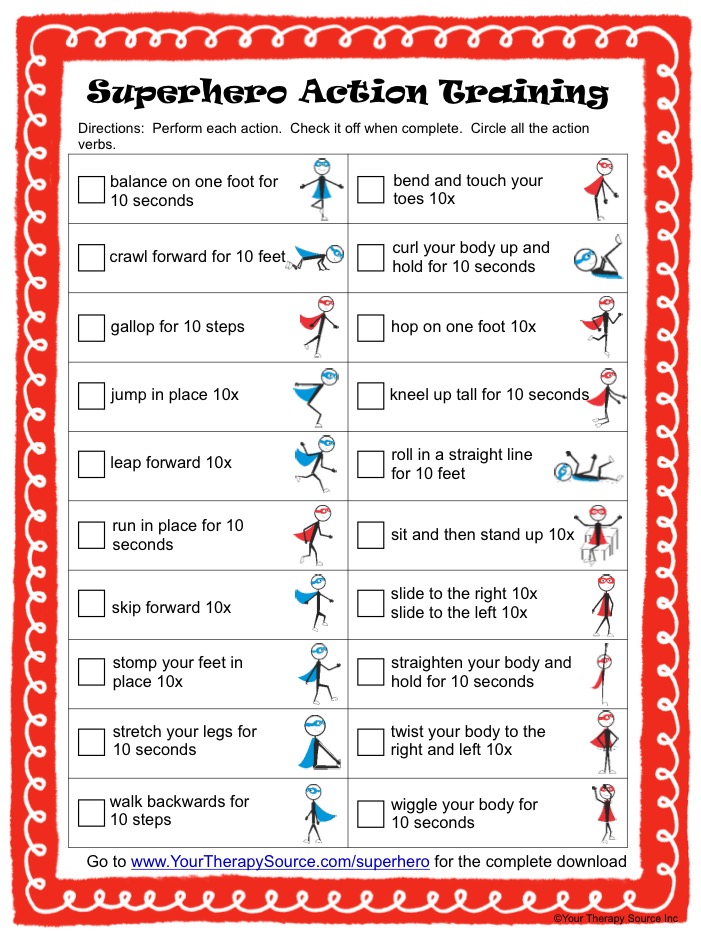Fostering Visual Spatial Intelligence in Children through Language

When children are learning new motor skills, it can be a wonderful opportunity to foster visual spatial intelligence in children. The definition of visual-spatial relations is the ability to visually perceive two or more objects in relation to each other and to yourself.
How to Foster Visual Spatial Intelligence in Children
Here is a question to ask yourself today… Do you talk to your clients during school based therapy sessions? As a teacher do you verbally describe what you are actually doing?
As teachers, parents and especially pediatric therapists, we offer an excellent opportunity to include visual spatial intelligence activities, language acquisition, cognitive skills, memory skills along with movement skills throughout the day.
Provide Ample Time for Movement Activities
The kinesthetic sense is activated during movement activities which allows children to take in information via an additional pathway instead of just auditory or visual. When multisensory expereinces occur, we can foster visual spatial intelligence in children.
Examples of Using Language to Foster Visual Spatial Intelligence
Here are some examples of how you can use language to help young children across several domains instead of just the motor domain:
Talk about the actions
Talk about the actions the children are doing to help them to understand spatial location and body awareness. This can also help with motor planning. Don’t forget to provide ample time to teach and practice locomotor skills. For example:
- “You are standing in between two chairs”
- “The walker is behind you.”
- “You are jumping to the right.”
Verbalize Directional Cues for Body Awareness
Verbalize directional cues regarding their own bodies to help with body awareness. For example:
- “I am moving your arm up and down”
- “I am bending your knee.”
Use Action Words
Use action words to describe what the children are doing. For example:
- “You are all jumping.”
- “Let’s climb the ladder.”
Superhero Action Verbs packet includes sensory motor activities about action verbs such as roll, crawl, kneel, walk, run, hop, throw, kick, etc. Practice fine motor, gross motor, handwriting and literacy skills with this collection. Grab a FREE activity, Superhero Action Training to get started right away.
Use Descriptive Words Regarding Speed and Direction to Help with Visual Spatial Intelligence in Children
Use descriptive words regarding speed and direction to assist again with body awareness and motor planning. For example:
- “You are running fast.”
- “You are walking backwards.”
Ask Open Ended Questions
An excellent way to foster executive functioning skills as well as visual spatial intelligence in children is to ask open ended questions to see if they understand movement concepts and the relation to other people or animals. For example:
- “How would you move if you were a basketball player?”
- “Can you move like your favorite animal?”
Reinforce Memory Skills
Reinforce working memory skills by asking questions about movement. For example: “Do you remember what movements we did when we started the therapy session?”
Discuss and Ask Specific Questions
Discuss and ask questions about movements that are similar and opposite. For example:
- “You are moving so fast now. How can you move the opposite of fast?”
- “You are throwing the ball at the target. Can you think of another way to throw a ball?”
Resources to Encourage Visual Spatial Intelligence in Children
The Visual Spatial Puzzles – Square Puzzle Pack includes 11 puzzles to challenge the ability to visually perceive two or more objects in relation to each other. The puzzles are in black and white AND color.
This packet of Spatial Awareness Puzzles – Copy the Drawings includes over 70 dot to dot diagrams to practice visual motor and visual spatial skills.
[mv_video key=”pxd1psn24mlwdupupfov” volume=”70″ aspectRatio=”true” title=”Visual Spatial Skills in Children” thumbnail=”https://mediavine-res.cloudinary.com/video/upload/pxd1psn24mlwdupupfov.jpg” jsonLd=”true” doNotOptimizePlacement=”false” doNotAutoplayNorOptimizePlacement=”false” sticky=”false”]






